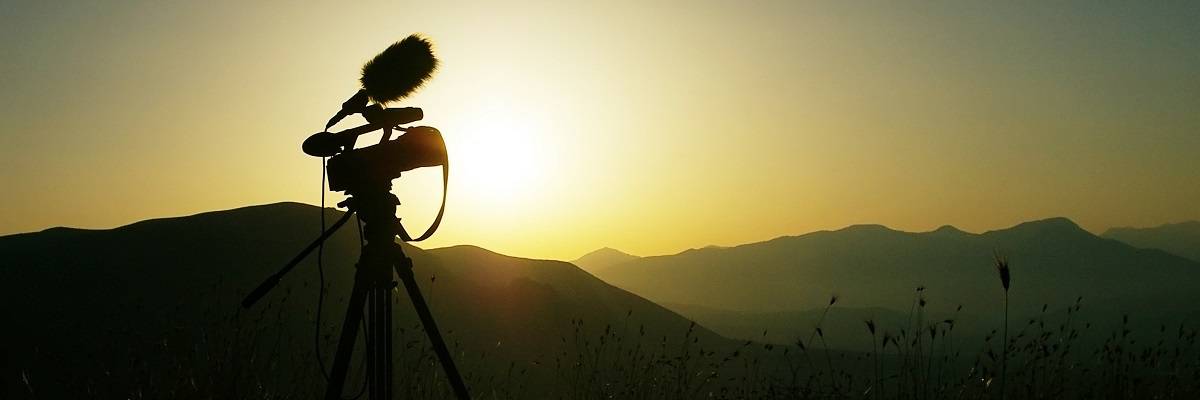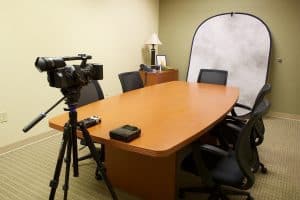By Danny Terry
Video depositions can be beneficial to your case, as the recording can show the witness’s facial expression and body language, and capture changes in the inflection of the witness’s voice and any pauses before answering. To ensure the best quality video, it’s important to consider the layout of the room where your deposition will take place. There are two primary types of camera placement that are used in video depositions.
End-to-End Setup
This is the most common setup in a video deposition. The videographer places the camera, audio mixer and backup video recorder at the far end of the table opposite the witness. The opposing attorneys sit opposite each other on either side of the table, and the court reporter typically sits in between the taking attorney and the witness.
Pros:
- Attorneys are on opposite sides of the table, facing each other.
- Court reporter has a clear view of all parties.
- The camera can easily zoom in on the witness and exhibits without causing any image distortion.
Cons:
- If the table is narrow, objects (laptop screens, water bottles, coffee cups) on the left or right side of the table may appear in the video frame.
Side-to-Side Setup
Also referred to as the “California setup” where it is used most often, there may be circumstances where the videographer elects to use this setup for your video deposition. Typically, the videographer would elect to use this setup due to space constraints in conference rooms. Other constraints that might warrant this setup include: issues due to window location, conference room equipment, table location and more. In this setup, the videographer may need to place the witness on the long side of the table with the camera placed directly across the table from the witness. The court reporter will then be placed next to the witness, across from the camera and the attorneys.
Pros:
- Attorneys from both sides of the case can directly face the witness.
- The court reporter has a clear view of each attorney.
Cons:
- Due to the proximity of the witness to the camera, the witness’s head and arms may appear distorted, especially when leaning towards the camera.
- The composition of the scene will be limited, and it may be difficult to zoom in on any exhibits the witness is holding without causing distortion.



